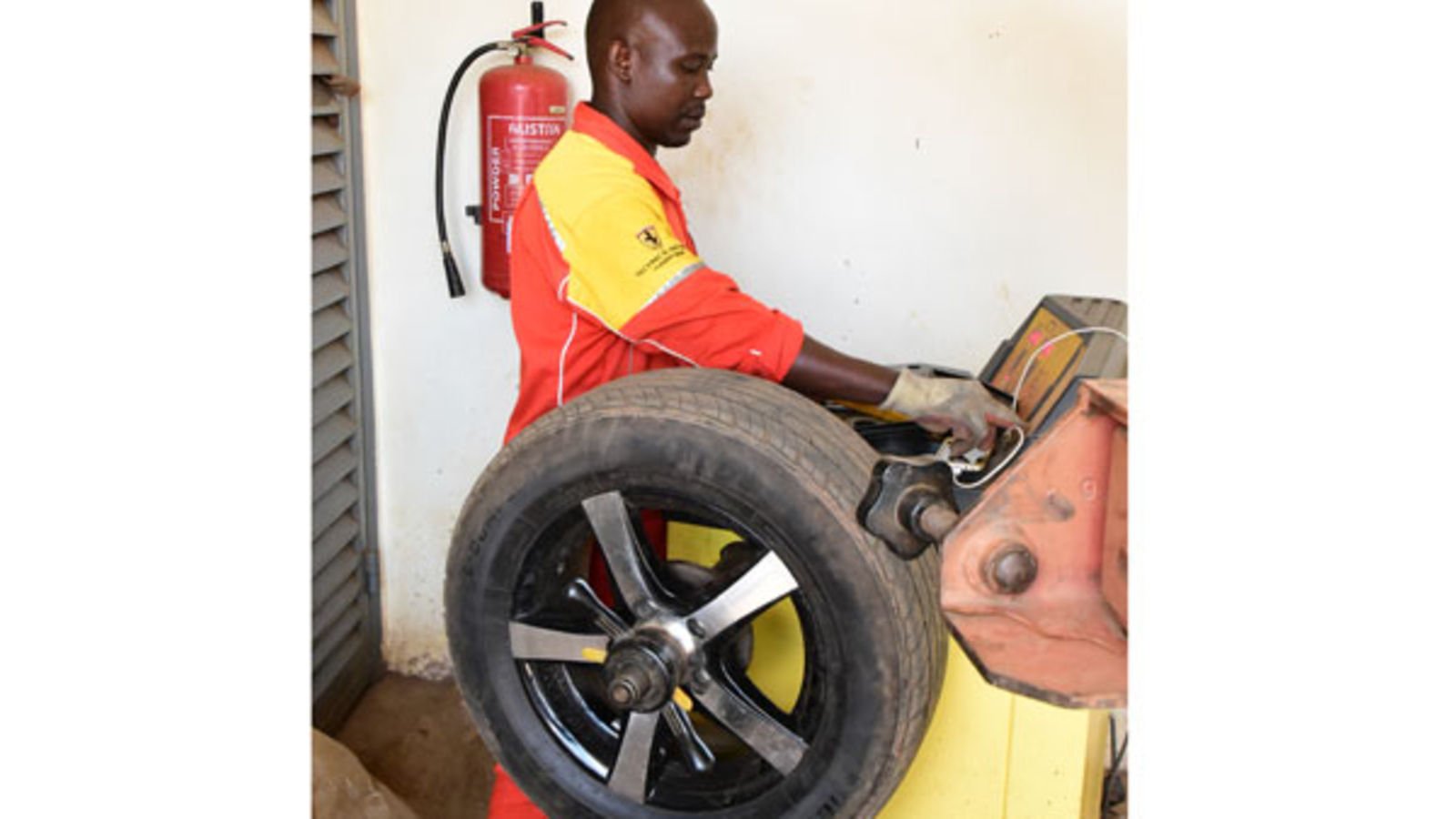Is your car due for wheel alignment?


Is your car experiencing uneven tyre wear? Does it pull to one side as you drive, or does the steering wheel become crooked when you are driving straight? If so, your car likely needs an alignment. It is important to visit your mechanic to have your wheels aligned. Continuing to drive in this condition can worsen your tyres and affect the steering and handling of your vehicle.
What is an alignment?
According to moogparts.com, an alignment is a procedure your mechanic performs to restore your vehicle's suspension to its proper form. By adjusting the vehicle's tyres and axles, the wheels are once again aligned with each other and can make solid contact with the road.
When the wheels of your car are not properly positioned and angled, your car’s alignment is not good. When driving, the wheels of your car should be able to face in the direction you want them to without any resistance. If the wheels of your vehicle are out of alignment, this can be a challenge.
Causes of misalignment
Paul Kaganzi a seasoned mechanic, says your car can get out of alignment for several reasons. However, a common cause is abundant on Ugandan roads; potholes.
“Whenever you drive your car and you hit a large pothole, the alignment of your vehicle is likely to be affected. Your car can also go out of alignment when you hit roadside curbs, speed humps, or rumble strips. Humps and rumble strips are meant to slow road users down. However, some people just zoom past them because they are in a hurry, affecting the alignment of the vehicle,” Kaganzi explains.
Road accidents will also cause your car to get out of alignment.
Unevenly worn-out tyres
If you drive your car with unevenly worn-out tyres, the alignment of your wheels is likely to be affected. Kaganzi explains that unevenly worn-out tyres are usually a result of poor wheel alignment. Therefore, if you realign the wheels without replacing the worn tyres, the car’s alignment will be affected again.
Raising your car
Car owners often raise their cars using pacers to avoid scratches and damage. However, raising the car changes the manufacturer's suspension design, affecting the ground clearance or ride height, which is the distance between the lowest point of the car's underbody (excluding the tyres) and the ground.
This is crucial for vehicle performance, especially for off-road handling and preventing damage to the underside when driving over uneven surfaces, bumps, or obstacles. Suspension wear and tear can also impact steering components such as shock absorbers, steering tie rods, and steering linkages, potentially affecting alignment.
Larger wheels
Modifying your car's wheels by using larger tyres and rims than recommended can throw off the wheel alignment. Every car has a specific wheel size recommended by the manufacturer, so using larger tyres can affect the alignment. Additionally, normal wear and tear on suspension and steering components can also impact your car's alignment.
What if I drive a poorly aligned car?
When you drive a car with poorly aligned or positioned wheels, you will have difficulty steering the car in the direction you want. The tyres will drag as you drive. When the alignment is off, you may notice that the tyres are tilted either upwards or downwards.
Kaganzi emphasises that driving a car with misaligned wheels will cause tyre wear and tear, which will ultimately become costly.
Car handling and stability
Improper wheel alignment can negatively impact the stability and handling of your car. When tyres and wheels are not properly aligned and angled, it can result in handling and stability issues. Good handling refers to your ability to control your car comfortably while driving.
If you can navigate corners without feeling as though you are losing control, then your car's handling is good. On the other hand, if your tyres are misaligned, you may experience a pulling sensation and instability while driving, increasing the risk of accidents. Poor alignment can also affect your overall driving comfort, as proper wheel alignment contributes to a more relaxed driving experience.
Fuel efficiency
When your wheels are out of alignment, it causes uneven tyre tread wear. The treads are designed to provide grip on the road, and when they wear down, the tyres become less effective at maintaining traction. This can cause the car to slip more easily, making the engine work harder to maintain control and speed. As a result, the engine consumes more fuel than it would otherwise.
Types of wheel alignment
Kaganzi says there are two main modes of alignment carried out by mechanics; the front-end alignment, which involves the alignment of the front wheels and thrust alignment, which involves the alignment of both the front and rear.
What will my mechanic do?
According to moogparts.com, when you take your car to the mechanic for alignment, your mechanic will first take your vehicle for a test drive to determine the extent of misalignment.
Then, they will examine the tyres and suspension components to ensure that everything is in working order. Any parts that are broken or show signs of excessive wear will be replaced before the alignment process begins.
Next, the tyre pressure is checked on all four tyres and any needed adjustments are made.
Your vehicle will be hooked up to the alignment machine and your mechanic will begin making the adjustments to the suspension angles according to the manufacturer’s specifications. There are four main areas that your mechanic will be adjusting; toe, camber, caster and thrust.
How often?
According to www.firestonecompleteautocare.com, how often you need a wheel alignment depends on your typical road conditions and how you drive. It is important to note that bad roads can often be the cause of alignment issues. If you frequently ride over potholes, drive down poorly maintained roads, or even hit a curb, your alignment can be affected.
The general recommendation is to have your alignment checked at the first signs of misalignment or around every 6,000 miles. Your vehicle manufacturer may also recommend an alignment inspection as part of the vehicle’s ongoing maintenance.
By adjusting the vehicle’s tyres and axles, the wheels are once again aligned with each other and can make solid contact with the road. PHOTO/FILE








0 Comments